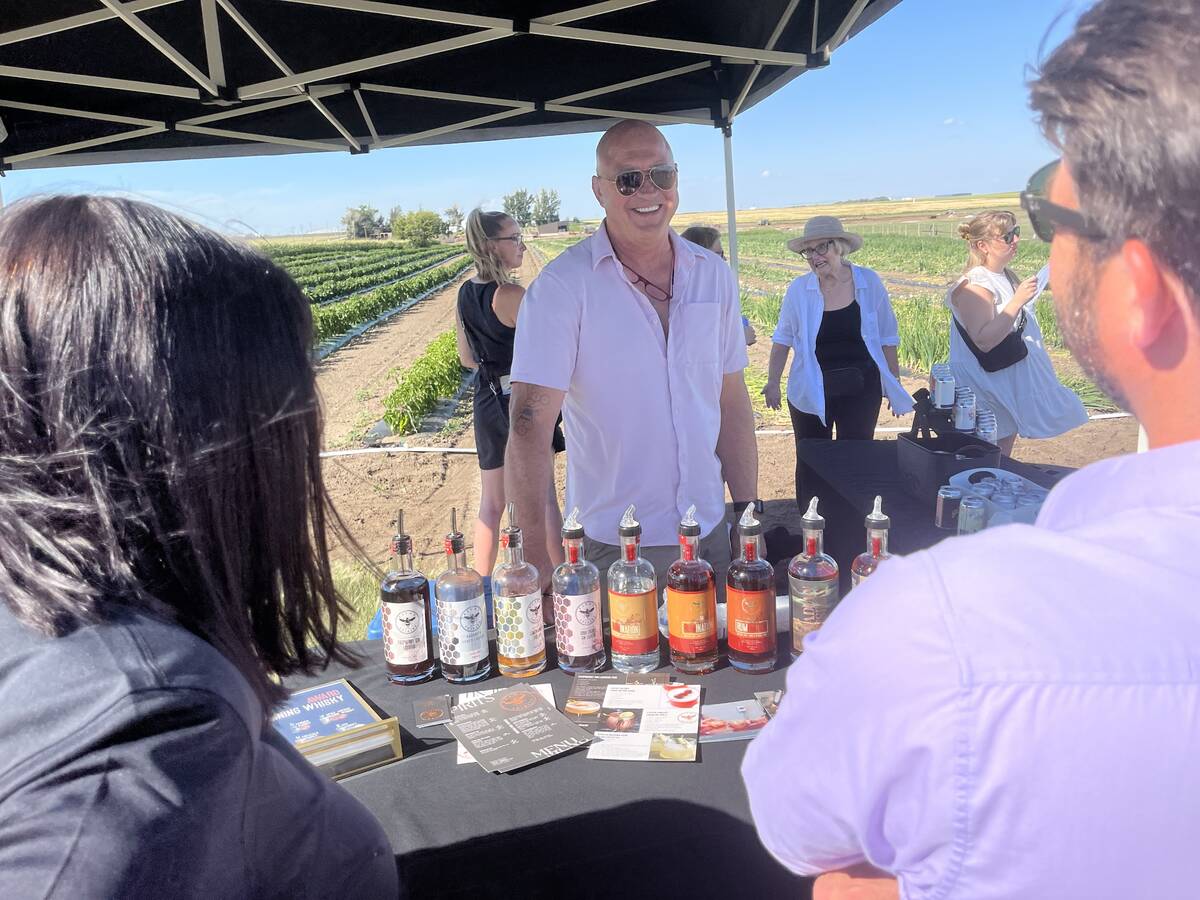BANFF, Alta. – Thorough knowledge of local and provincial regulations is essential when building a new hog barn or cattle feedlot.
Applications to build such facilities can divide communities, said Keith Wilson, an Edmonton lawyer who specializes in agricultural issues.
Often a core group of three or four people band together to launch pressure and stop development.
“If somebody is trying to stop you, they will try to stop you in the courts,” said Wilson at the recent Alberta Cattle Feeders Association convention.
Read Also

From farmer to award-winning distiller
Pivot Spirits showcases transition from farmer to distiller with provincial award-winning results in Alberta for Lars Hirch
“Make sure you understand the bylaw and make sure the municipality follows its own bylaw,” said Wilson.
Most people living near proposed intensive livestock operations worry about reduced quality of life, he said. They also worry about increased traffic, dust, odor and water contamination or depletion. Others simply don’t like intensive farming.
In Alberta, each municipality has its own set of land-use bylaws and anyone wanting to build must start by applying for a development permit from the local municipality.
If it is issued, concerned neighbors may launch an appeal. It then goes to a development appeal board and could ultimately end up in the Alberta court of appeal.
If the court turns down the appeal, the application goes back to the development appeal board.
The court only examines whether the municipality followed its own procedures. The case could drag on for 18 months, so it might be better to restart plans elsewhere, said Wilson.
Homework vital
Developers must do their homework.
Before a bucket of concrete is poured, the developer must learn how the local approval process works and talk to the development officer early.
Get copies of the local land-use bylaw and the Alberta code of practice for the safe handling of manure. This code is commonly incorporated in many land-use bylaws already. Read and understand both sets of regulations, advises Wilson.
When applying for a permit, include as much information as possible.
Do soil tests and list economic benefits to the community, manure management plans as well as information on water consumption and its sources. Include maps of where the neighbors live, traffic patterns and where the manure will go.
Find out what the municipality wants in return.
Municipalities are starting to attach conditions before giving approval. For example, councils may ask an intensive operation to contribute money toward road maintenance.
Wilson suggested asking for a development agreement rather than conditions. Terms of an agreement can be short term and may be amended when circumstances change. Conditions can’t be changed or amended after they are set.
As the permit moves down the procedural road, don’t assume people on council or those on the development appeal board understand how a feedlot is run. Explain what is done and why. Don’t have private meetings with anyone.
In addition, understand municipal, provincial and federal legal obligations and learn the consequences for non-compliance.
For example, it is against federal law to release manure from a feedlot into a creek, river or lake that could kill any aquatic life. Anything that can have an adverse effect on the surface water, ground water or human health is not allowed.
It is also illegal to release offensive odors according to Alberta law.
Fines can run up to $300,000 and a corporation could be fined $1 million. Courts may occasionally decide to use someone as an example to send a message to the industry, said Wilson.
Establish policies
Good intentions don’t count, so farmers need to develop policies to ensure that no pollution happens. Teach the staff the rules. Routinely review operations and promptly correct deficiencies.
Implement an environmental management system that identifies environmental risks to ground and surface water and problems overloading soil with nutrients from manure. Develop plans and procedures to deal with risks and know what to do if there is an accident.
Co-operate with environmental protection investigators but do not feel obliged to give them a farm tour. They show up at a farm because of a complaint.
“Keep your guard up. They are not there to help, they are there to gather evidence to convict,” said Wilson.















